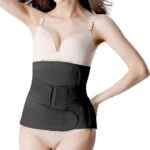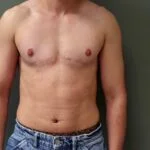Quick Facts About Liposuction
- Principle Benefits: Slimmer, more sculpted body contours; versatile treatment that can be used in many different body areas; reduction in stubborn fat that is resistant to diet and exercise
- Common Treatment Areas: Abdomen, flanks, hips, back, thighs, thighs, knees, upper arms and neck
- Recovery Timeline: Most patients can return to non-strenuous activities within a few days; mild swelling may persist for several months
- Average Cost: Surgical fee of $3,637*, based on statistics from the American Society of Plastic Surgeons. This does not relate to specific areas or number of areas and does not include all other associated costs including anesthesiologist/anesthetist, facility fee, meds, etc.
 Unwanted fat and fat deposits are a very common issue with many people. Even at or near ideal body weight, localized fat deposits often fail to respond to even the most disciplined dietary and exercise plans. Plastic surgeon Steven H. Turkeltaub, MD offers liposuction to treat those individuals who want to address excess fat while enhancing their body contours.
Unwanted fat and fat deposits are a very common issue with many people. Even at or near ideal body weight, localized fat deposits often fail to respond to even the most disciplined dietary and exercise plans. Plastic surgeon Steven H. Turkeltaub, MD offers liposuction to treat those individuals who want to address excess fat while enhancing their body contours.
- What is Liposuction?
- Liposuction vs. Weight Loss Surgery
- Liposuction vs. Tummy Tuck for Abdominal Sculpting
- What Types of Liposuction Are Available?
- How is the Liposuction Procedure Performed?
- Is Liposuction for Men Different Than For Women?
- How Many Areas Can Be Treated During One Liposuction Procedure?
- Can Liposuction Be Combined With Other Procedures?
- What is the Recovery from Liposuction Like?
- How Long Do Liposuction Results Last?
- What Are the Potential Risks and Side Effects of Liposuction?
- What Kind of Scars Will I Have from Liposuction?
- How Much Does Liposuction Cost?
- Are There Any Good Liposuction Alternatives?
- How Do I Choose the Best Liposuction Surgeon?
- Additional Liposuction Frequently Asked Questions
- Liposuction Before-and-After Photos
What Is Liposuction?
Liposuction is the surgical procedure that is used to remove excess fat and localized fat deposits in targeted regions of your body – sculpting and recontouring your figure. This procedure can help you achieve a slimmer and more desirable appearance by reducing and even eliminating undesirable fat accumulations that may be difficult or impossible to get rid of through traditional dieting and exercise. Common areas of treatment in women include the abdomen, inner and outer thighs, flanks, hips, knees, back and neck. In men, the usual areas are the abdomen, love handles, chest and neck.
It is important to remember that liposuction is NOT a weight loss solution nor is it a treatment for the widespread removal of fat. The best results can be obtained with more localized fat deposits, allowing for precise sculpting of various areas of the body.
Liposuction vs. Weight Loss Surgery
Despite the fact that liposuction removes fat to help patients achieve a more sculpted and slimmer physique, it should never be thought of as a surgical technique for weight loss. Bariatric surgery is intended to help men and women lose a significant amount of weight as part of a commitment to an overall healthier lifestyle. While liposuction can certainly complement one’s weight loss and self-betterment efforts, it is designed for individuals who are already at or somewhat close to their desired weight and need help eliminating fat that proves resistant to diet and exercise.
Liposuction vs. Tummy Tuck for Abdominal Sculpting
Liposuction and tummy tuck surgery (abdominoplasty) can both be great options for creating an improved abdominal contour although they are used to address different concerns. Liposuction is employed to get rid of stubborn fat buildup and deposits in areas that have relatively good skin tone and no laxity. On the other hand, an abdominoplasty is performed to remove loose, excess skin and the associated underlying fat as well as to repair stretched out abdominal musculature. This procedure will typically be the appropriate treatment option when any degree of excess skin or laxity is present in the abdominal region.
What Types of Liposuction Are Available?
Dr. Turkeltaub offers his patients a variety of liposuction techniques which can be selectively used depending upon a variety of factors. More than one technique is often employed during surgery. One of these, ultrasonic assisted liposuction, utilizes ultrasound waves to disrupt the fat, allowing for easier, more even fat removal. This approach provides an increased margin of safety. Its use can also lead to superior results with more thorough and even fat removal than could be obtained in the past with standard liposuction alone.
Tumescent liposuction involves injecting fluid containing an anesthetic and vasoconstrictor into the fat prior to beginning liposuction. This approach minimizes blood loss during surgery and results in decreased discomfort and bruising post-operatively. It is always used with ultrasonic assisted liposuction and is commonly employed with other fat suctioning removal techniques.
How Is the Liposuction Procedure Performed?
Liposuction is typically performed under general anesthesia due to the far superior comfort level and overall experience. The incisions needed for the procedure are very small (approximately 1/4 to 3/8 inch) and usually leave fairly inconspicuous scars. Through these tiny openings, Dr. Turkeltaub will insert a suction tube known as a cannula which is used to break up and eliminate the fat cells from the targeted area. Unless very large amounts of fat are removed (generally 5 liters or more), liposuction is usually done as an outpatient.
Is Liposuction for Men Different Than for Women?
Generally speaking, there are some differences between liposuction for men versus that for women. First, as noted in the opening section of this page, some of the most commonly targeted treatment regions differ between males and females. Whereas the neck, back, abdomen, thighs, flanks, hips, knees and hips are the most popular areas for women, men most frequently undergo liposuction to target the chest, abdomen, love handles and neck. This is not to say men cannot have liposuction in other regions of the body, but rather that these areas are where stubborn fat tends to accumulate most for males whereas in other areas, it is fairly rare and minor.
The second difference is that fat in males is typically thicker and more fibrous than the fat in females and it tends to be located closer to underlying musculature in areas of accumulation. While these factors do not mean liposuction is any less effective for men, it does mean that performing the procedure and achieving exceptional results can be more challenging.
Lastly, the quantity of fat removed during male liposuction is generally less than that obtained from women. This is due to the fact that fat deposition in women is greater in percentage and amount and it is situated largely deep to the skin whereas in men, most of their fat is stored intra-abdominally and thus not treatable by liposuction.
How Many Areas Can Be Treated During One Liposuction Procedure?
The number of areas treated during a single liposuction procedure is not relevant or important—it is the total quantity of fat to be extracted that impacts decisions, risks, safety and outcome. Based on clinical studies regarding patient safety, the American Society of Plastic Surgeons (ASPS) recommends that the combined amount of fat removed during one liposuction session be no greater than five liters regardless of how many areas of the body this fat was obtained from. The rationale behind this recommendation is not that removing more than five liters of fat is automatically dangerous but rather that the risk of any potential medical issues or other complications tends to increase when quantities larger than five liters are extracted in a single session.
With this in mind, the exact number of areas that can be treated during one liposuction procedure will depend upon each individual’s specific needs, goals and anatomy.
Can Liposuction Be Combined With Other Procedures?
Liposuction can be performed with other procedures to amplify or optimize the overall results that you are looking to achieve. Liposuction can be combined with procedures such as a tummy tuck (abdominoplasty), breast lift and breast augmentation. By pairing liposuction with other treatments, you can address a wider range of concerns and obtain more comprehensive results. Oftentimes, liposuction is included in a mommy makeover procedure, which employs multiple different procedures in order to reverse the effects that pregnancy and nursing can have on the body.
What Is the Recovery from Liposuction Like?
Discomfort for a majority of patients following surgery is fairly mild and quite tolerable, many taking little or no pain medication. Most are already physically active within the first 24 to 48 hours. Returning to work or school can be as soon as a few days.
A compressive garment, which is worn for a variable period of time postoperatively, provides comfort and can minimize swelling and bruising. Most of the swelling resolves within a few months though it can take six months to a year to see the “final” long-term result.
How Long Do Liposuction Results Last?
The contouring effects of liposuction are generally noticeable immediately after surgery and should gradually become more apparent as normal postoperative swelling resolves. If a stable weight is maintained, most patients can expect long-lasting, if not permanent, results due to the fact that the fat cells removed during treatment are permanently eliminated. However, there are still some fat cells left in the targeted area that can grow in size if a significant amount of weight is gained later in time. Therefore, by keeping a steady weight via diet and exercise patients can maximize the longevity of their liposuction results.
What Are the Potential Risks and Side Effects of Liposuction?
When performed appropriately by a board-certified plastic surgeon who is highly trained, skilled and experienced in this body contouring treatment, the risk of serious complications resulting from liposuction is minimal. In spite of this, there is always the potential for certain issues and unforeseen outcomes to occur when a surgical procedure is conducted, so comprehensively understanding all aspects of liposuction before moving forward with treatment is very important.
Expected occurrences following liposuction include some minor to moderate bruising, swelling and/or numbness in the treated area(s). These most often are temporary and should resolve with time.
Some of the more notable risks and complications associated with liposuction include:
- Uneven body contours
- Over- or under-treatment of the targeted area(s)
- Fluid accumulation deep in the skin (seroma)
- Hematoma – an accumulation of blood deep to the skin
- Infection
- Thick and/or wide scars
In extremely rare situations, blood clots can form in the legs and even travel to the lungs. There can also be injuries to intra-abdominal organs from wayward cannulas that have been misdirected by the surgeon.
As previously mentioned, the risk of encountering any issues or long-term side effects is greatly diminished when liposuction is performed by a well-trained, experienced and highly skilled board-certified plastic surgeon.
What Kind of Scars Will I Have from Liposuction?
As a surgical procedure that involves incisions, the formation of scars is an inevitable aspect of liposuction. Fortunately, the incisions used to perform treatment are typically very small and tend to be quite inconspicuous once fully healed. In addition to genetics as well as the body’s natural healing response, some factors that can affect the final appearance of scarring include:
- Location of the incision(s)
- Skin quality
- Scar care products used
- Exposure to sun/UV rays
- Adherence to postoperative instructions
- Overall health and wellness
In all cases, Dr. Turkeltaub’s strategic placement of incisions, refined surgical approach and careful wound closure technique help ensure any potential scarring is as hidden and/or subtle as possible. All things considered, he has found that patients are generally focused on their liposuction results and not so much on their scars.
How Much Does Liposuction Cost?
According to statistics released by the American Society of Plastic Surgeons (ASPS), the average cost of liposuction is approximately $3,637*. It should be noted, however, that this price is solely indicative of the fee charged by plastic surgeons and does not include expenses for the operating facility, anesthesia, pre- and/or post-operative medicines or any other components related to surgery and/or recovery. Furthermore, this does not take into account the volume to be removed, the areas involved, complexity, etc., so in reality it is not a very helpful number.
To obtain a price quote for liposuction of the areas that you are considering, you will need to meet in-person with Dr. Turkeltaub for a consultation. During this appointment, he will listen carefully to what bothers you about your appearance, conduct a comprehensive assessment of your area(s) of concern and tailor a personalized treatment plan to meet your needs. Once a surgical strategy is developed, Dr. Turkeltaub can provide you with an estimate of the total cost of your procedure.
If you are interested in financing for liposuction, a staff member can help you get started on the approval process with a reputable healthcare lender. Our practice partners with several trusted companies, all of whom offer payment plan options that can help make treatment affordable for virtually any budget.
*This average price is determined by the American Society of Plastic Surgeons—it is not a quote for the cost of liposuction at Dr. Turkeltaub’s practice.
Are There Any Good Liposuction Alternatives?
In most cases, liposuction is considered to be the gold standard for removing stubborn fat and improving the contour of the targeted region. That said, there are certain instances in which an alternative fat reduction technique may be a somewhat effective solution depending on the area of concern, the amount of fatty tissue present, skin tone and the unique desires and expectations of the patient.
CoolSculpting® is one non-surgical option that employs freezing of the fat in order to reduce fat levels and provide some contouring. Results are seen over a long period of time rather than immediately. CoolSculpting® also requires several treatments in order to obtain results that are generally inferior to those obtained with liposuction.
At the time of your consultation, Dr. Turkeltaub can evaluate your aesthetic concerns and discuss all potential treatment options in complete detail. If liposuction would not be the most effective fat reduction technique, he will provide his recommendation for which procedure(s) are better suited to your specific needs and goals.
How Do I Choose the Best Liposuction Surgeon?
Finding a highly-qualified liposuction surgeon with whom you feel comfortable is an important part of obtaining an optimal result. It is best to research your options thoroughly so that you can make the most confident and informed decision. Dr. Turkeltaub recommends ensuring that your prospective surgeon possesses the following qualities:
- Board certification through the American Board of Plastic Surgery (ABPS)
- Membership in prestigious professional organizations, such as the American Society of Plastic Surgeons and The Aesthetic Society®
- Excellent online reviews that demonstrate a track record of patient satisfaction
- A readily-available gallery of before-and-after photos showcasing their past work—especially for your treatment of interest
- A friendly and knowledgeable staff who make you feel supported and at ease
- Clear, consistent and honest communication
Once you have done your preliminary research, scheduling a consultation with a prospective surgeon is often the best way to evaluate whether they are the right fit for your needs. This appointment should be a pressure-free opportunity for you to ask questions and determine how comfortable you feel with a doctor and their staff.
Additional Liposuction Frequently Asked Questions:
Q: Does liposuction really work?
A: The results from liposuction can be very effective and dramatic if performed for the right reasons and by someone with extensive training in and experience doing it—like a reputable board-certified plastic surgeon. It is ideally used for the removal of localized fat deposits that remain despite dieting and exercise and where there is little to no skin laxity. As previously mentioned on this page, liposuction is not a weight loss procedure.
Q: Is liposuction safe?
A: When surgery is done skillfully and carefully, the major risks are very low. With everything else being equal, there is an increased risk for problems when greater than five liters of fat are removed at one time. In this situation, it is generally recommended to be closely monitored for an extended period of time and this could be facilitated by staying overnight at an approved medical facility.
Q: How much fat can be removed with liposuction?
A: The answer to this question depends more on your unique needs, goals and health as there is no universal, specific upper limit on the total amount of fat that can be removed with liposuction. In cases requiring significant fat removal, however, no more than five liters should generally be extracted during a single liposuction procedure for safety reasons (as referenced in the answer to the previous question). Should more than five liters of fat need to be removed to achieve an ideal outcome, multiple treatment sessions spaced apart may be necessary.
Q: How much pain will I experience following liposuction?
A: If the tumescent technique is used, there is surprisingly little discomfort even when many large areas are treated. A majority of Dr. Turkeltaub’s patients take little or no pain medication.
Q: How can I reduce swelling after liposuction?
A: To reduce swelling after liposuction, a compression garment will be placed immediately following surgery and should be worn for a period of time as specified by Dr. Turkeltaub based on your needs and recovery progression. Additional measures that can facilitate swelling reduction include keeping the treatment area elevated if and when possible, intermittent cool packs for the first 48 hours if instructed, and being mildly active rather than bed ridden.
Q: Does insurance cover liposuction?
A: Liposuction is considered a cosmetic procedure and is, therefore, not covered by insurance. However, plastic surgery financing options are available to help make treatment an affordable reality for almost anyone. We would be happy to assist you with applying for the payment plan of your choice through a respected healthcare lender, if desired. This can also be done directly from our website.
Q: I have a fair amount of fat on my abdomen which I would like to have removed and I’m deciding between liposuction and CoolSculpting®. Do you have a recommendation?
A: One of the advantages of liposuction is that following surgery you will immediately see results which will continue to improve over a period of several months. In addition, treatment with liposuction is usually accomplished in one procedure. With CoolSculpting®, there are a series of treatments over a several month period of time. The results are not seen immediately but rather very gradually over time as your body absorbs the destroyed fat cells. The number of treatments and needed treatment time can add up and yet the ultimate results usually do not approach anywhere near what can be obtained with liposuction. Costs can ultimately even be similar. For some patients, the advantage of being able to obtain a lesser improvement without having to undergo surgery is what attracts them to CoolSculpting®.
Q: How much weight can you lose with liposuction?
A: As mentioned above, liposuction should not be viewed as a weight loss procedure and is instead designed to eliminate targeted pockets of stubborn fat. Patients are instructed to come into their procedure close to or at their ideal weight. That said, while liposuction cannot help you lose a significant amount of weight, it can create figure-enhancing definition and help sculpt the body for improved aesthetics.
Q: When can I drive after liposuction?
A: Patients are instructed to have someone drive them home after their liposuction procedure due to the lingering effects of anesthesia and general post-surgical grogginess. It is also important to refrain from driving for as long as you are taking any prescription pain medications. Most patients report feeling well enough to forgo pain medication and resume normal activities such as driving within a few days following treatment. That said, each surgery and recovery will be unique to the individual and you should be sure to carefully follow all of Dr. Turkeltaub’s post-operative instructions.
Q: How old do you have to be to get liposuction?
A: Ideal liposuction candidates should be 18 or older. Beyond that, patients should also be in good overall health and have healthy, realistic expectations for what the procedure can accomplish.
Q: How soon after liposuction can I exercise?
A: The precise timeline for when you can resume exercising after liposuction will vary based on factors such as how much fat was removed and where it was removed from. In general, patients can often resume light exercise 2-3 weeks after their procedure, while more vigorous activities can be gradually reincorporated after 4-6 weeks. During your post-operative appointments, Dr. Turkeltaub can assess the progress of your recovery and provide you with more personalized activity guidelines.
Liposuction Before-and-After Photos*
Dr. Turkeltaub has helped many patients achieve the slimmer and firmer body shape they desire through his advanced liposuction procedures. Below are some examples of his work.
Due to social media policies, the following images have been censored. Please click on the button below to view the image.
*Individual Results May Vary
Discover What Liposuction Surgery Can Do for You
Both ultrasonic and tumescent liposuction offer many benefits over the traditional liposuction procedure. Please contact The Arizona Center for Aesthetic Plastic Surgery today to learn more about the operation or to schedule an initial consultation with Dr. Turkeltaub.









